Nonprofits Nationally Suffer From Late Government Payments, CT Tackling Issue
/
Connecticut is one of eight states that has begun to respond to a serious problem facing nonprofit organizations in a time of tight budgets and reductions in state funding: late payments and duplicative requirements by government agencies. A new report from the Urban Institute says the problem – which grew more serious during the recession – may be easing somewhat, but still has a way to go.
The 57-page report, “Nonprofit-Government Contracts and Grants: Findings from the 2013 National Survey,” indicated that “Joint government-nonprofit working groups in Connecticut, Hawaii, Illinois, Maine, Maryland, New Jersey, New York, and Texas are tackling issues, such as duplicative documents and audits and late payments, with the goal of improving government processes and the ability of nonprofits to win and successfully implement contract and grant requirements.”
The data, according to the report, is “a sobering reminder that human service nonprofits are continuing to wait extended periods of time for payments.” The national survey indicates that 22 perce nt of nonprofits received payments 61-90 days late from local governments, 24 percent from state governments and 20 percent from the federal government – all increases from 2009 survey data. The number of nonprofits experiencing late payments of more than 90 day dropped slightly for local and state government payments, but grew slightly for federal government payments.
nt of nonprofits received payments 61-90 days late from local governments, 24 percent from state governments and 20 percent from the federal government – all increases from 2009 survey data. The number of nonprofits experiencing late payments of more than 90 day dropped slightly for local and state government payments, but grew slightly for federal government payments.
The Urban Institute report outlined a series of recommendations for governments and nonprofits to improve systematic relationships; state-by-state data is due to be released next month.
A 22-member Connecticut panel appointed by Gov. Dannel Malloy, in a report issued last fall, found that “some state agencies do not pay contractors in a timely manner consistent with agreed upon timeframes and thereby create additional hardship and costs of borrowing for nonprofit service providers.”
The group recommended that “the State of Connecticut adopt Principles to Guide the State-Private Nonprofit Provider Partnership, intended to promote a fair, effe ctive, responsive, transparent and accountable partnership between nonprofit providers and their state government funders.” It also called for revisions to the state’s procurement standards, streamlining data gathering, and “payment rates that cover the true cost of services.”
ctive, responsive, transparent and accountable partnership between nonprofit providers and their state government funders.” It also called for revisions to the state’s procurement standards, streamlining data gathering, and “payment rates that cover the true cost of services.”
Nationally, nearly half of organizations reported that they experienced limitations on the percentage of government funds that could be used for program and organization administration costs. Approximately one-quarter of organizations with a contract indicated that they had to share in the cost of the contract and one-half of grantees said they had a matching requirement associated with a grant.
Reflecting the fiscal challenges faced by nonprofits, the report found that “more than 40 percent of respondents turned to their reserves to make ends meet and about 25 percent of nonprofits reduced the number of employees on their payroll. About 14 percent of organizations reduced the number of clients served and almost 11 percent cut programs.” In addition, 21 percent of respondents nationwide said their experience with government contracts and grants was worse than in the pr evious year, while 6 percent said it had improved.
evious year, while 6 percent said it had improved.
The report concluded that “all types of nonprofits reported problems with late and insufficient payments, complex and burdensome application and reporting processes, and changes made to contracts and grants after they have been approved.”
Late payments have the biggest impact on human-service and health organizations, which receive the lion’s share f all government spending on nonprofits, the Chronicle of Philanthropy reported. Overall, the national study found that:
- government agencies entered into approximately 350,000 contracts and grants with about 56,000 nonprofit organizations;
- on average, nonprofits have six contracts and/or grants per organization; the median is three; and
- governments paid $137 billion to nonprofit organizations for services (in 2012)
The Urban Institute is a nonprofit, nonpartisan policy research and educational organization that examines the social, economic, and governance problems facing the nation.


 That would mean that by the middle of this century, the one-in-10 year flood level at Atlantic City, for example, would exceed any flood level seen previously, including the natural disaster that was Superstorm Sandy. The scientists suggest, based on their research, that “planners should account for rising sea levels,” noting that “where the consequences of flooding are high, prudent planning requires consideration of high-end projections” outlined in their study.
That would mean that by the middle of this century, the one-in-10 year flood level at Atlantic City, for example, would exceed any flood level seen previously, including the natural disaster that was Superstorm Sandy. The scientists suggest, based on their research, that “planners should account for rising sea levels,” noting that “where the consequences of flooding are high, prudent planning requires consideration of high-end projections” outlined in their study. . “I believe that the projections for bedrock locations are applicable throughout Connecticut,” said Miller, a professor of earth and planetary sciences in Rutgers' School of Arts and Sciences.
. “I believe that the projections for bedrock locations are applicable throughout Connecticut,” said Miller, a professor of earth and planetary sciences in Rutgers' School of Arts and Sciences. 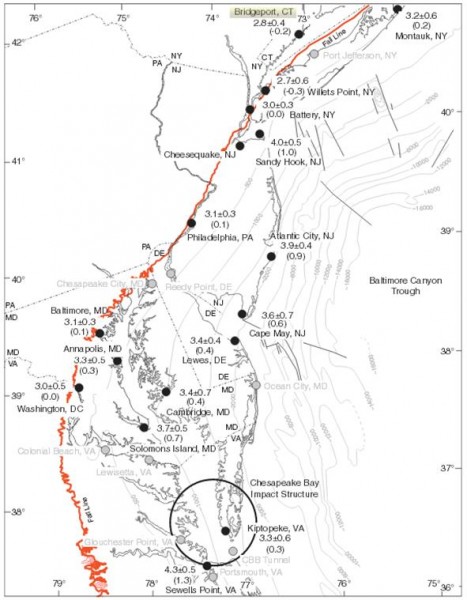
 vel rise in the mid-Atlantic region also results from changes in ocean dynamics. The researchers said sea-level rise could be higher -- 2.3 feet by mid-century and 5.9 feet by the end of the century -- depending on how sensitive the Gulf Stream is to warming and how fast the ice sheets melt in response to that warming.
vel rise in the mid-Atlantic region also results from changes in ocean dynamics. The researchers said sea-level rise could be higher -- 2.3 feet by mid-century and 5.9 feet by the end of the century -- depending on how sensitive the Gulf Stream is to warming and how fast the ice sheets melt in response to that warming. c organization representing more than 62,000 members in 144 countries.
c organization representing more than 62,000 members in 144 countries.
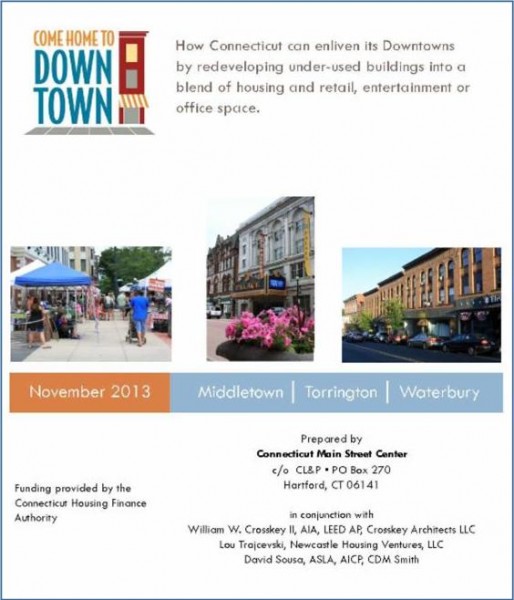 in mixed-use neighborhoods are one-third to one-half lower than in suburban areas. It has been estimated that every downtown in Connecticut has at least one building that is under-utilized, containing a store or restaurant on the first floor, but with upper floors that are vacant or used for storage that could instead generate income if converted to apartment homes.
in mixed-use neighborhoods are one-third to one-half lower than in suburban areas. It has been estimated that every downtown in Connecticut has at least one building that is under-utilized, containing a store or restaurant on the first floor, but with upper floors that are vacant or used for storage that could instead generate income if converted to apartment homes.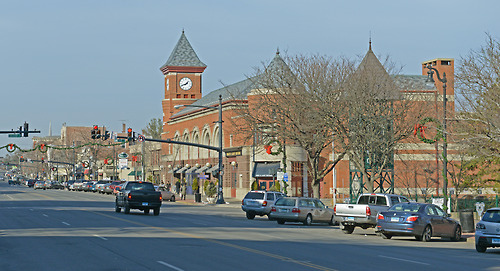 ent, they are often not enough to enable mixed-use growth. Favorable zoning regulations are important, but they cannot create mixed-use development by themselves. Each of the pilot communities had zoning policies that allowed for buildings with a mix of uses - a practice which should be commended and encouraged - but there were still significant impediments to promoting this type of growth. In addition, lessening current on-site parking requirements as a whole will also help promote housing in our downtowns.
ent, they are often not enough to enable mixed-use growth. Favorable zoning regulations are important, but they cannot create mixed-use development by themselves. Each of the pilot communities had zoning policies that allowed for buildings with a mix of uses - a practice which should be commended and encouraged - but there were still significant impediments to promoting this type of growth. In addition, lessening current on-site parking requirements as a whole will also help promote housing in our downtowns.
 ich Time
ich Time they immediately got involved. School administrators in Manchester last month suspended four Manchester High School students suspected of creating and posting degrading descriptions of female students,
they immediately got involved. School administrators in Manchester last month suspended four Manchester High School students suspected of creating and posting degrading descriptions of female students,  Young people are drinking more coffee than in recent years, according to the data compiled by the
Young people are drinking more coffee than in recent years, according to the data compiled by the  he National Coffee Association data indicates that 76 percent of adult Hispanic-Americans said they drank coffee yesterday, 13 percentage points ahead of the total population. By comparison, 47 percent of African-Americans and 64 percent of Caucasian-Americans said they drank coffee yesterday.
he National Coffee Association data indicates that 76 percent of adult Hispanic-Americans said they drank coffee yesterday, 13 percentage points ahead of the total population. By comparison, 47 percent of African-Americans and 64 percent of Caucasian-Americans said they drank coffee yesterday. t the program focus on learning about one’s own leadership personality, participatory decision- making, effective group dynamics and leadership practices, including change leadership. The field experiences allow participants to meet the area’s key players and organizations, better understand the region’s assets and challenges, and gain a greater understanding of creative problem solving while leveraging limited resources.
t the program focus on learning about one’s own leadership personality, participatory decision- making, effective group dynamics and leadership practices, including change leadership. The field experiences allow participants to meet the area’s key players and organizations, better understand the region’s assets and challenges, and gain a greater understanding of creative problem solving while leveraging limited resources. Consortium for Higher Education (HCHE) to create a media device that would tell the story of the Career Beginnings program, which connects Hartford-area high schools, businesses, volunteers/mentors and parents in a coordinated effort to increase the percentage of Hartford teenagers who graduate from high school, pursue higher education and fulfill career goals.
Consortium for Higher Education (HCHE) to create a media device that would tell the story of the Career Beginnings program, which connects Hartford-area high schools, businesses, volunteers/mentors and parents in a coordinated effort to increase the percentage of Hartford teenagers who graduate from high school, pursue higher education and fulfill career goals.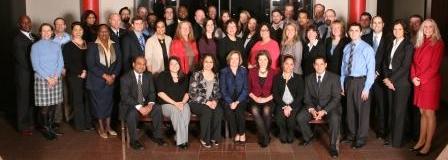 ).
).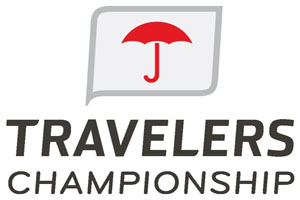
 llars raised in the Birdies for Charity pledge-based fundraiser and the Chip In for Charity ticket-sales fundraiser. Additionally, the Travelers Championship raised awareness and funds for local charities through a variety of special events like the Birdies for the Brave Golf Outing, BlumShapiro 5K for Charity, Premier Limo First Tee Classic, Military Appreciation presented by Saint Francis Care, Golf Digest Junior Pro-Am, Northstar Wealth Partners Celebrity Mini Golf Tournament, Women's Day presented by Travelers, Powerstation Events Concert Series, and the LEGO® Children's Charity Golf Tournament.
llars raised in the Birdies for Charity pledge-based fundraiser and the Chip In for Charity ticket-sales fundraiser. Additionally, the Travelers Championship raised awareness and funds for local charities through a variety of special events like the Birdies for the Brave Golf Outing, BlumShapiro 5K for Charity, Premier Limo First Tee Classic, Military Appreciation presented by Saint Francis Care, Golf Digest Junior Pro-Am, Northstar Wealth Partners Celebrity Mini Golf Tournament, Women's Day presented by Travelers, Powerstation Events Concert Series, and the LEGO® Children's Charity Golf Tournament. sbury in 2013 and 2011, and Cheshire in 2013 and 2011. Single appearances were made by Norwalk, Stamford, Portland, Tolland, Greenwich, South Windsor, Fairfield, and most recently, Brookfield.
sbury in 2013 and 2011, and Cheshire in 2013 and 2011. Single appearances were made by Norwalk, Stamford, Portland, Tolland, Greenwich, South Windsor, Fairfield, and most recently, Brookfield.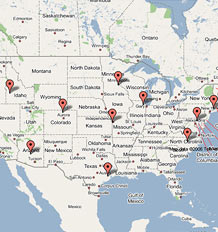 Hartford at #55. The town was joined by Stamford at #78, Hamden at #87, and Norwalk at #90.
Hartford at #55. The town was joined by Stamford at #78, Hamden at #87, and Norwalk at #90. well among the top 101, with no less than five pizza selected – including another top ten selection – the Tomato Pie at
well among the top 101, with no less than five pizza selected – including another top ten selection – the Tomato Pie at  he sausage pie from
he sausage pie from  crust! It's coal-fired perfection, thin yet substantial - a true feat of pizza engineering. You can pick up a slice, and it won't flop over like most new-school Neapolitan pies. The most justly famous option is the white clam, piled with out-of-the-shell longnecks and a healthy dose of garlic - it's briny, creamy, chewy and a true revelation,” Zagat pointed out.
crust! It's coal-fired perfection, thin yet substantial - a true feat of pizza engineering. You can pick up a slice, and it won't flop over like most new-school Neapolitan pies. The most justly famous option is the white clam, piled with out-of-the-shell longnecks and a healthy dose of garlic - it's briny, creamy, chewy and a true revelation,” Zagat pointed out. om Rhode Island, on the half shell, as an appetizer. This occurred around the mid 1960's, the website explains, and gradually became popular through the years.
om Rhode Island, on the half shell, as an appetizer. This occurred around the mid 1960's, the website explains, and gradually became popular through the years. ts from the U.S. and beyond will exchange knowledge about voluntary action, nonprofit organizations, and philanthropy – and Connecticut will be well represented among participants. David Nee, representing the Connecticut Data Collaborative and Terry Edelstein, nonprofit liaison to the Governor will be among the panelists for a plenary session of the Conference. Among those attending the national conference close to home are Kyle Barrette (UConn), Mary Bernstein (UConn), Ron Cretaro (Connecticut Association for Nonprofits), Robert Fisher (UConn), Richard Frieder (Hartford Public Library), Maggie Gunther Osborn (Connecticut Council for Philanthropy), Reinaldo Rojas (UConn), Homa Naficy (Hartford Public Library), Nmarasimhan Srinivasan (UConn), Rebecca Thomas (UConn) and Jun Yan (UConn).
ts from the U.S. and beyond will exchange knowledge about voluntary action, nonprofit organizations, and philanthropy – and Connecticut will be well represented among participants. David Nee, representing the Connecticut Data Collaborative and Terry Edelstein, nonprofit liaison to the Governor will be among the panelists for a plenary session of the Conference. Among those attending the national conference close to home are Kyle Barrette (UConn), Mary Bernstein (UConn), Ron Cretaro (Connecticut Association for Nonprofits), Robert Fisher (UConn), Richard Frieder (Hartford Public Library), Maggie Gunther Osborn (Connecticut Council for Philanthropy), Reinaldo Rojas (UConn), Homa Naficy (Hartford Public Library), Nmarasimhan Srinivasan (UConn), Rebecca Thomas (UConn) and Jun Yan (UConn). d all aspects of civil society, as well as to meet the needs of those who study and lead “the social sector.”
d all aspects of civil society, as well as to meet the needs of those who study and lead “the social sector.” 



























